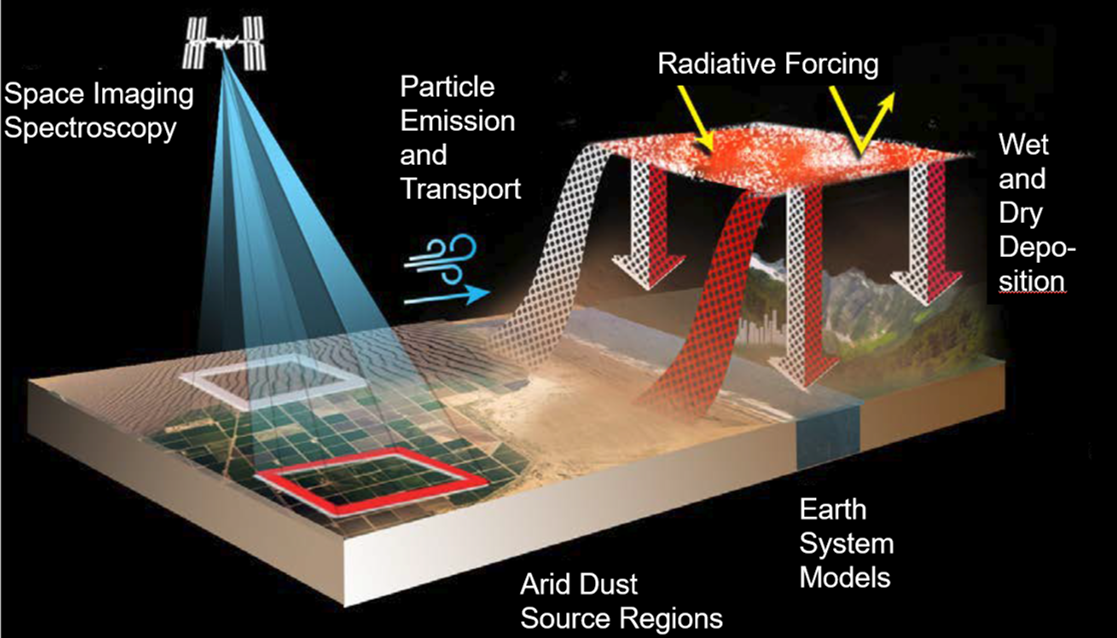
A Focus on Mineral Dust
In 2020, winds in Africa blew surface mineral dust into the atmosphere that then crossed the Atlantic Ocean and affected states from Florida to Texas. Mineral dust has many impacts to the Earth. Today we know mineral dust originates in the arid land regions of our planet, but we know very little about the composition. EMIT will make new measurements of the source regions to be used with advanced Earth system models to close this knowledge gap and answer key science questions.












